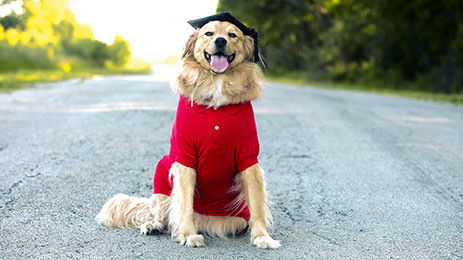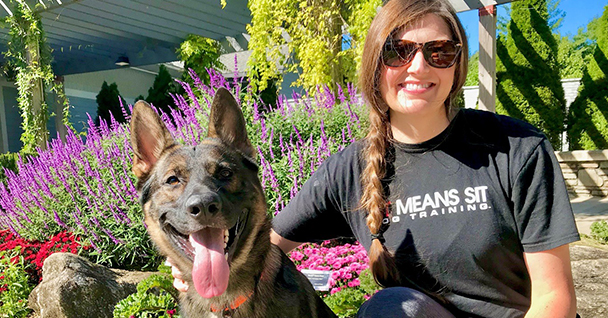Recognizing Canine Body Language During Dog Training
Recognizing Canine Body Language During Dog Training
Blog Article
Important Tips for Successful Dog Training: A Guide for Pet Dog Owners
Reliable dog training is a diverse procedure that needs a critical technique tailored to both the family pet's personality and the owner's purposes. Recognizing just how to navigate these barriers can substantially enhance the training experience, eventually changing the connection in between proprietor and pet dog.
Comprehending Canine Behavior
Understanding dog habits is essential for effective training and promoting an unified relationship between dogs and their proprietors. dog training. Pets communicate mostly through body language, articulations, and actions, making it essential for proprietors to translate these signals precisely.

Socializing plays a significant duty in pet dog actions; exposure to numerous atmospheres, individuals, and various other pets can substantially influence a canine's personality. Elements such as breed attributes and individual personality need to assist training approaches, as some breeds may have specific behavioral characteristics that demand customized methods. By recognizing these aspects, owners can create a supportive environment that motivates positive behavior, causing effective training outcomes and a much deeper bond with their family pets.
Developing Regular Commands
Efficient communication with your dog begins with establishing regular commands. This fundamental aspect of training is essential for promoting understanding in between you and your animal. Uniformity in the commands you utilize makes sure that your pet can dependably link certain words or phrases with the wanted behaviors.
When picking commands, pick clear, distinct words that are simple to state and distinguish from each other. Avoid utilizing similar-sounding commands that may perplex your canine. For instance, making use of "sit" and "stay" is appropriate, but "sit" and "hit" could cause misunderstandings.
Furthermore, maintain the very same tone and volume for every command. Canines are delicate to vocal cues, so differing your tone can create confusion.
It is equally essential to make certain that all member of the family are on the very same web page relating to the commands utilized. A united front in command use will certainly avoid mixed signals and strengthen the discovering process.
Positive Support Methods
The power of favorable support in dog training depends on its capacity to encourage wanted actions with rewards and praise. This technique is based in the concept that behaviors adhered to by beneficial end results are most likely to be repeated. By incorporating favorable support into your training routine, you can efficiently form your canine's actions in a useful manner.
To apply favorable support, it's crucial to recognize what inspires your dog, whether it be deals with, toys, or verbal praise. When your canine performs a preferred action, such as remaining on command, quickly reward them with a reward or love. This association in between the command and visit the website the favorable outcome strengthens their understanding.
It's important to timing the rewards correctly; delivering the support within secs of the desired actions assists your pet make the connection (dog training). Furthermore, consistency is essential-- make sure that all relative make use of the same commands and reward systems to avoid confusion

Slowly, you can minimize the regularity of treats as your pet dog discovers the behavior, transitioning to applaud or intermittent incentives. This approach not just fosters a solid bond in between you and your pet however also promotes a positive knowing atmosphere, making educating a pleasurable experience for both.
Socialization and Communication
Consistently subjecting your pet to a variety of atmospheres, individuals, and various other pets is critical for their social growth. Socialization ought to start early, preferably during the crucial window of 3 to 14 weeks, when puppies are most responsive to brand-new experiences. Nevertheless, older dogs can also take advantage of continuous socialization efforts.
Introduce your pet dog to various settings, such as parks, pet-friendly stores, and metropolitan areas. This exposure helps them adjust to different stimuli, decreasing anxiety and worry feedbacks. Urge positive communications with other dogs and individuals, making sure that these encounters are regulated and secure to foster confidence.
Make use of structured playdates with look what i found courteous pet dogs, as this can enhance your pet dog's social skills and instruct them appropriate actions. Obedience courses and training sessions also supply outstanding opportunities for socializing, allowing your pet to connect with others in a supervised setting.
Monitor your pet dog's body movement throughout interactions, as this will help you assess their comfort level. Gradually boost exposure to even more challenging circumstances while guaranteeing that each experience is positive. A well-socialized canine is more probable to show balanced habits, making them a delight to have in any type of setup.
Dealing With Usual Training Difficulties
Every pet dog owner will encounter training obstacles at some time, despite their pet's age or socialization level. Determining usual issues such as stubbornness, interruptions, and fearfulness can help in establishing effective techniques for enhancement.

Progressively present diversions as the dog becomes a lot more proficient in commands. Short, constant training sessions are additionally reliable in maintaining interest.
Fearfulness can prevent a pet's understanding process. Gradual desensitization to the source of concern, combined with positive support, can help reduce stress and anxiety. Perseverance is vital; never ever compel a dog into a situation that creates distress, as this may intensify the concern.
Ultimately, understanding and resolving these common difficulties with an organized method will certainly cultivate a much more productive training experience, strengthening the bond from this source in between pet and proprietor while advertising efficient learning.
Verdict
In recap, successful pet dog training relies upon a comprehensive understanding of canine behavior, the establishment of regular commands, and the application of favorable reinforcement methods. Socializing plays a critical duty in creating well-adjusted pets, while resolving usual training difficulties needs patience and flexibility. By applying these necessary strategies, pet dog proprietors can promote a strong bond with their pets and promote preferable behaviors, inevitably leading to a harmonious relationship between human beings and their canine friends.
Recognizing pet habits is crucial for efficient training and promoting a harmonious connection in between pooches and their proprietors.Socialization plays a substantial role in canine habits; direct exposure to various atmospheres, people, and other animals can considerably influence a canine's personality.The power of favorable support in canine training exists in its ability to encourage preferred behaviors with incentives and praise. By including favorable reinforcement right into your training program, you can properly shape your pet dog's actions in a positive way.
In recap, successful pet training relies on a comprehensive understanding of canine behavior, the facility of regular commands, and the application of favorable reinforcement techniques.
Report this page